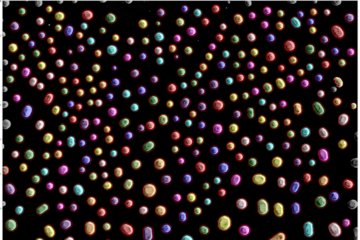All genres
2241.
Poster
Investigation and Modeling of the Elastic Properties of Lobster Cuticle Depending on its Grade of Mineralization. MRS Spring Meeting, San Francisco, CA, USA (2008)
2242.
Poster
Novel multi-descriptive approach to crystal plasticity of textured beta-Ti alloys. Deutschen Physikalischen Gesellschaft (DPG) Annual Meeting 2008, Berlin, Germany (2008)
2243.
Poster
Stability and kinetic of droplets: A free energy based lattice Boltzmann study. Sommer Workshop on Nano-& Microfluidics, Bad Honnef, Germany (2008)
2244.
Poster
Fabrication of Ultrafine Grained Ferrite/Martensite Dual Phase Steel by Large Strain Warm Deformation and Subsequent Intercritical Annealing. ISUGS 2007 (International Symposium on Ultrafine Grained Steels), Kitakyushu, Japan (2007)
2245.
Poster
Bottom up design of novel titanium-based biomaterials through the combination of ab-initio simulations and experimental methods. Euromat 2007, Nürnberg, Germany (2007)
2246.
Poster
Texture measurement of grain-oriented electrical steel after secondary recrystallisation. Soft Magnetic Materials Conference (SMM 18), Cardiff, UK (2007)
2247.
Poster
Effects of initial orientation, sample geometry and friction on anisotropy and crystallographic orientation changes in single crystal microcompression deformation: A crystal plasticity finite element study. International workshop on small scale plasticity, Brauwald, Switzerland (2007)
2248.
Poster
Laves phases in the ternary Nb–Cr–Al system: Phase equilibria at 1150, 1300 and 1450 °C. EUROMAT 2007, Nürnberg, Germany (2007)
2249.
Poster
Identification of ε-martensite in Fe-based shape memory alloys by means of EBSD. E-MRS 2007 conference "Microscopy and spectroscopy techniques in advanced materials characterization", Warsaw University of Technology, Warsaw, Poland (2007)
2250.
Poster
Nanomechanics of thin glassy polystyrene films. 1st IMPRS-SurMat Workshop on Surface and Interface Engineering in Advanced Materials, Klosterhost, Germany (2007)
2251.
Poster
Micro-mechanical modeling of near-gamma Ti-Al-Nb. 11th World Conference on Titanium (JIMIC5) Ti-2007, Kyoto, Japan (2007)
2252.
Poster
Theory-guided design of Ti-binaries for human implants. "Theory Meets Industry" workshop, Vienna, Austria (2007)
2253.
Poster
3D Investigation of Early Stages of Recrystallization in Deformed Goss-Oriented Fe3%Si Single Crystals. The Third International Conference on Recrystallization and Grain Growth ReX & GG III, Jeju Island, South Korea (2007)
2254.
Poster
3 Dimensional EBSD study of the relationship between triple junctions and columnar grain in electrodeposited materials. Electron Back Scatter Diffraction Meeting 2007, New Lanark, Scotland, UK (2007)
2255.
Poster
Hardness anisotropy of crystalline alpha-chitin: An ab-initio based conformational analysis. Spring meeting of the German Physical Society (DPG), Regensburg, Germany (2007)
2256.
Poster
An ab-initio study of hardness anisotropy of crystalline alpha-chitin. International Max-Planck Workshop on Multiscale Modeling of Condensed Matter, Sant Feliu de Guixols, Spain (2007)
2257.
Poster
Fracture Behavior and Shear Resistance of Lobster Cuticle. MRS Fall Conference, Boston, MA, USA (2006)
2258.
Poster
Residual Stresses in the Exoskeleton of a Homarus americanus Lobster. SNI 2006, German Conference for Research with Synchrotron Radiation, Neutrons and Ion Beams at Large Facilities, Hamburg, Germany (2006)
2259.
Poster
Residual Stresses in the Exoskeleton of a Homarus americanus Lobster. SNI 2006, German Conference for Research with Synchrotron Radiation, Neutrons and Ion Beams at Large Facilities, Hamburg, Germany (2006)
2260.
Poster
A Slip Interaction Based measure of Damage Nucleation in Grain boundaries. MMM Third International Conference Multiscale Materials Modeling, Freiburg, Germany (2006)










